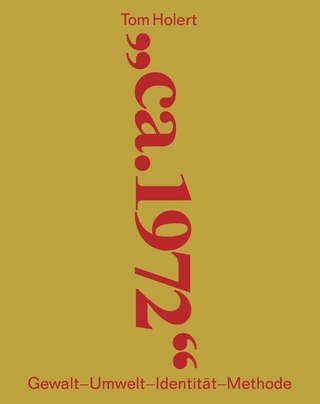
Underground Structures of the Cold War
The World Below
Seiten
2022
Pen & Sword Military (Verlag)
978-1-3990-7450-6 (ISBN)
Pen & Sword Military (Verlag)
978-1-3990-7450-6 (ISBN)
World-wide guide to the underground structures of the Cold War.
Books on the history of fortifications are plentiful. Medieval castles, the defensive systems of the seventeenth, eighteenth and nineteenth centuries, the trenches and bunkers of the First World War, the great citadels of the Second World War - all these have been described in depth. But the fortifications of the Cold War - the hidden forts of the nuclear age - have not been catalogued and studied in the same way. Paul Ozorak's Underground Structures of the Cold War: The World Below fills this gap in the literature. He describes when and where these bunkers were built, and records what has become of them. He explains how they would have been used if a nuclear war had broken out, and in the case of weapons bases, he shows how these weapons would have been deployed. His account covers every sort of facility - public shelters, missile sites, command and communication centres, storage depots, hospitals. A surprising amount of information has appeared in the media about these places since the end of the Cold War, and his book takes full advantage of it.
Books on the history of fortifications are plentiful. Medieval castles, the defensive systems of the seventeenth, eighteenth and nineteenth centuries, the trenches and bunkers of the First World War, the great citadels of the Second World War - all these have been described in depth. But the fortifications of the Cold War - the hidden forts of the nuclear age - have not been catalogued and studied in the same way. Paul Ozorak's Underground Structures of the Cold War: The World Below fills this gap in the literature. He describes when and where these bunkers were built, and records what has become of them. He explains how they would have been used if a nuclear war had broken out, and in the case of weapons bases, he shows how these weapons would have been deployed. His account covers every sort of facility - public shelters, missile sites, command and communication centres, storage depots, hospitals. A surprising amount of information has appeared in the media about these places since the end of the Cold War, and his book takes full advantage of it.
Paul Ozorak is an amateur historian with a passion for former military bases. He finds that the more secretive a base was, the more interesting it is. Fluent in French, he has also studied Russian, German, Chinese, Japanese and Spanish. A graduate in biochemistry, accounting and electronics, he now works as an accountant in Canada. Among his previous publications is another Cold War book Bunkers Bunkers Everywhere.
| Erscheinungsdatum | 11.08.2022 |
|---|---|
| Verlagsort | South Yorkshire |
| Sprache | englisch |
| Maße | 156 x 234 mm |
| Themenwelt | Geschichte ► Allgemeine Geschichte ► Zeitgeschichte |
| ISBN-10 | 1-3990-7450-4 / 1399074504 |
| ISBN-13 | 978-1-3990-7450-6 / 9781399074506 |
| Zustand | Neuware |
| Haben Sie eine Frage zum Produkt? |
Mehr entdecken
aus dem Bereich
aus dem Bereich
Gewalt, Umwelt, Identität, Methode
Buch | Softcover (2024)
Spector Books OHG (Verlag)
36,00 €
wie Freud im Kollektiv verschwand
Buch | Hardcover (2024)
Klett-Cotta (Verlag)
25,00 €


